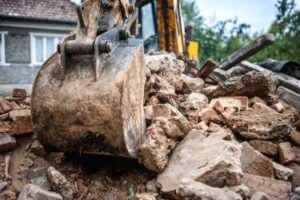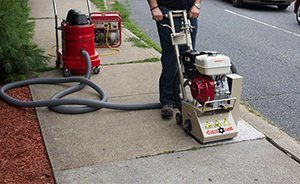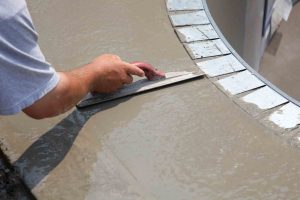Reinforcing bar, better known as rebar, plays a crucial role in the safe installation of many types of concrete structures. That’s because this bar, which comes in a range of diameters and lengths, dramatically increases concrete’s ability to withstand forces that would otherwise twist or bend it out of position. However, not all rebar is the same. In fact, manufacturers have their choice of six varieties of reinforcing bar made from different materials. Each of these options can provide essential benefits in certain situations.
Carbon Steel
Carbon Steel is the classic type of rebar found in all manner of construction projects across the country. While relatively cheap and super tough when used in the right diameter, carbon steel has one major drawback. When in the presence of water or a high-humidity environment, it corrodes. And once rebar corrodes, expansion of the material will lead to dangerous cracks and gaps in the surrounding concrete.
Epoxy-Coated Products
To solve the dilemma of corrosion sensitivity, some manufacturers offer carbon steel rebar covered by an outer coating of epoxy. Products in this category exactly match bare carbon steel for strength and durability. However, their ability to resist corrosion ranges from 70 times greater than bare steel to a whopping 1,700 times more significant. Still, epoxy-coated rebar has its own considerable drawback: It takes very little force to damage its protective outer layer and thereby reduce its corrosion resistance.
Galvanized Steel
Galvanized rebar represents something of a compromise between bare and epoxy-coated carbon steel. While not as corrosion-resistant as epoxy, the surface of a galvanized product will still provide about 40 times the resistance of bare steel. In addition, rebar in this category is much harder to damage than epoxy-coated rebar. However, galvanized steel costs more than bare or epoxy-coated carbon steel.
Manganese-Based Rebar
This type of material is also known as European rebar. The high manganese content of products in this category makes them too weak for installation in any region prone to seismic activity (i.e., earthquakes and tremors). European rebar is also not suitable for heavy-duty concrete structures built in any location. However, the material does cost less than other options.
GFRP Rebar
GFRP stands for glass-fiber-reinforced polymer. As this name implies, products in this category are synthetic and manufactured like carbon fiber. Similar to carbon fiber, GFRP loses strength when bent. This means that rebar created from this material can’t be used to make field bends during installation. On the plus side, glass-fiber-reinforced polymer doesn’t corrode. This makes it optimal for use in wet and humid environments. In addition, its light weight helps offset its high purchase price.
Stainless Steel
Stainless steel is the Rolls Royce of the rebar world. Products in this category resist corrosion about 1,500 times better than products made from bare carbon steel. In addition, this corrosion-proofing is much more durable than the protection provided by epoxy-coated carbon steel or galvanized steel. Also, while stainless steel holds up well under heavy loads, work crews still find it easy to bend on the job site. However, all of this versatility comes at a price, and stainless steel rebar costs more than any of the other five available varieties. For this reason, most builders avoid it unless facing specific situations that require its use.



